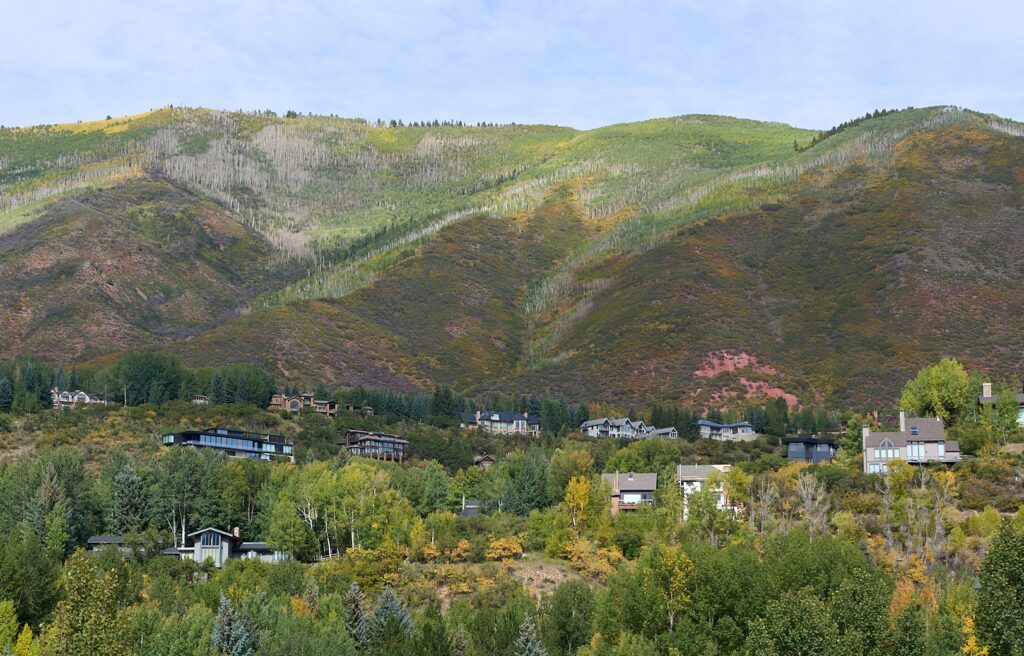Monitoring Forest Health from Above
ACES Staff
September 4, 2015

As climate change continues to trigger dramatic changes in our forest ecosystems, Aspen Center for Environmental Studies’ (ACES) For the Forest program is committed to producing groundbreaking scientific research on forest issues and actively restoring our forest landscapes. Educational initiatives include the Forest Health Index, which provides an annual “report card” for our watershed’s forests using over 20 indicators; Forest Forecasts, which visualizes current and future species distributions of 100 Western tree species under both best- and worst-case climate change scenarios; and the State of the Forest Report, a magazine-style publication that examines trends in climatic variables and insect and disease infestations while delving deeper into why we’re seeing changes in forest health in our area. ACES also is taking action with on-the-ground forest restoration projects through the Hunter-Smuggler Cooperative Plan, which will improve to forest health, wildlife habitat, recreation, and education opportunities for 4,861 acres of federal land adjacent to Aspen.
Watershed-scale forest health research, restoration projects, and education initiatives can be tricky from on the ground—you can only see so much from a road or trail. Thanks to a grant secured by local organization EcoFlight, I recently took to the skies for a one-hour forest overflight, an aerial perspective of what is happening in our forests! The benefits of the forest overflights are threefold: they allow us to take aerial photographs that help communicate trends in local forest health, they give us the opportunity to assess the efficacy of past restoration projects, and they provide a high-altitude vantage point critical to detecting stressed forest stands in need of attention.
 |
 |
| Conifer mortality near Basalt Mountain. | A lodgepole pine restoration in progress in an area of Smuggler Mountain hit by the mountain pine beetle. |
On this flight, we targeted conifer mortality in Snowmass Canyon, oakbrush regrowth on Basalt Mountain following April’s prescribed burn, aspen defoliation on the flanks of Mt. Sopris, a recent lodgepole pine restoration project on Smuggler, and an upcoming oakbrush restoration project in the Hunter Creek Valley. During the short flight we were able to gather information that would have taken days to secure on the ground, and from a much broader perspective.
 |
 |
| The new Hummingbird Trail in the Hunter Creek Valley, part of the Hunter-Smuggler Cooperative Plan |
ACES at Rock Bottom Ranch from the air. |
Many thanks to Bruce Gordon and everyone at Ecoflight, whose mission is to “educate and advocate for the protection of remaining wild lands and wildlife habitat through the use of small aircraft,” for providing this invaluable service to the benefit of our local forest ecosystems!
Click here for more information on ACES’ forest initiatives.
Related Content

RFV Phenology: Green is out, yellow is in! Or is it?
Learn More
ACES // City of Aspen Open Space Birding: Marolt Open Space 9/5/2024
Learn More